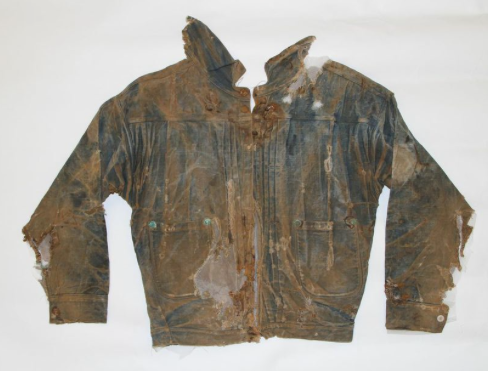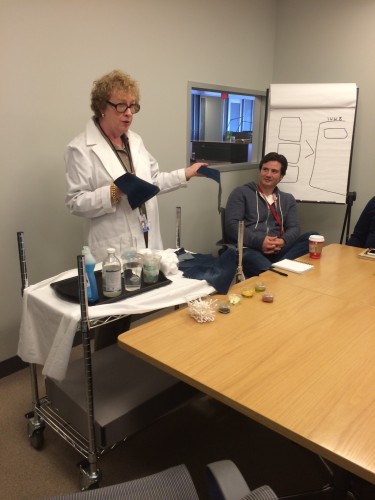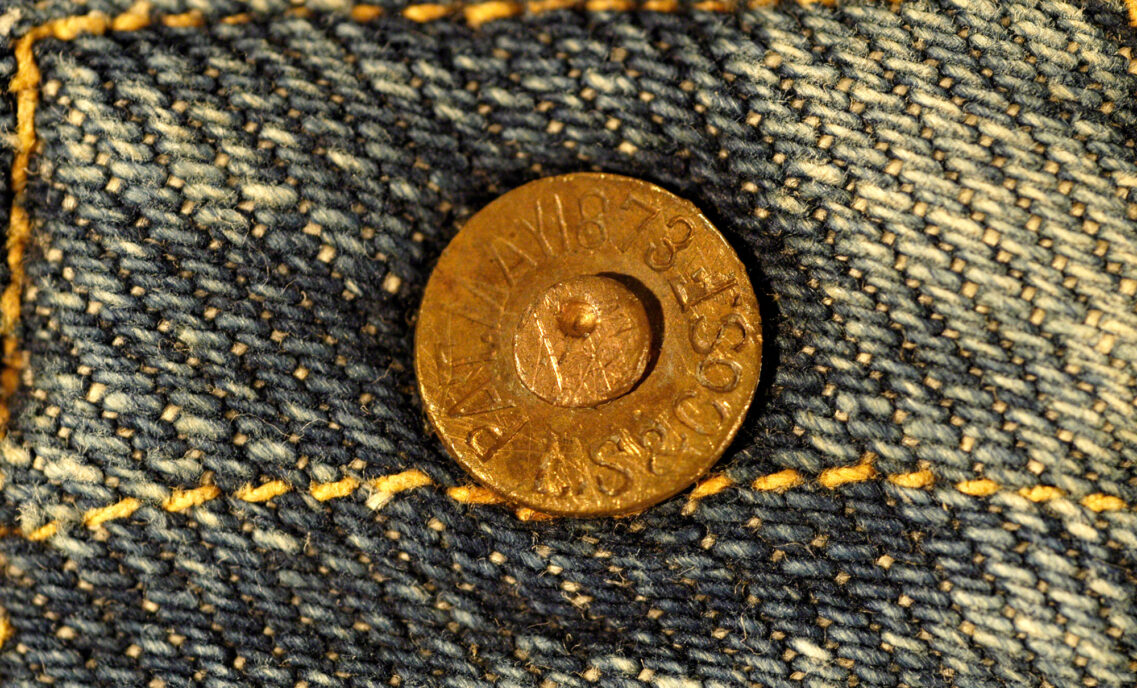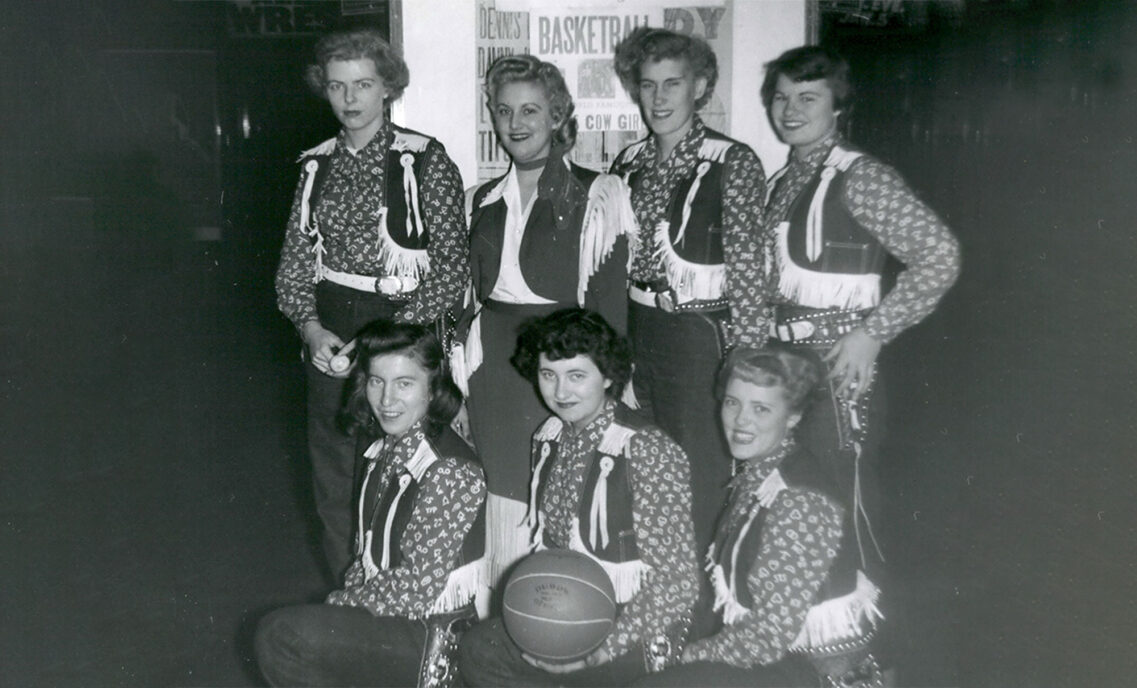Spot cleaning and denim care are part of the job description for my partner at the LS&Co. Archives – Archivist and Conservator, Stacia Fink. For the past 16 years, Stacia has been cleaning, mending, storing and preserving a world-class collection of vintage and modern Levi’s® jeans. Stacia has handled (with white gloves) thousands of blue jeans and other denim garments. As the caretaker of the world’s best collection of Levi Strauss & Co. clothing, Stacia has become a leading denim care expert. She shared her top tips and her extensive knowledge during a recent class on denim care and spot cleaning.
Stacia’s Spot Cleaning & Denim Care Tips:
- Use cotton-tipped swabs to clean directly on the spot
- Place a blotter underneath the spot you are cleaning to absorb the stain
- Dry clean dark denim before wear to set dye (to avoid dye transfer to light upholstery)
- Water applied directly to a stain works wonders
- Garments dry more quickly if a towel is placed above and below an item during cleaning
Dressed in her white lab coat, Stacia divided the denim care class into groups and gave each group a piece of denim. “Now add your own stains,” she said, passing out containers filled with mustard, mud, olive oil and other stain ingredients. Once all the groups had applied their stain of choice, Stacia brought out her own denim care tool kit: cotton-tipped swabs, diluted dish washing soap, water, powdered cleanser (mixed with water to make a paste), vinegar, and Orvus, a mild pH-balanced cleaner.
Spot cleaning denim is a good choice to keep jeans clean in lieu of throwing them into the washing machine. Stacia offered a few suggestions to the class of rookie denim cleaners. Mild liquid detergent worked well to remove the mustard. For mud, one group found that using cotton swabs with water and then mild detergent worked well. Stacia also uses another mild wash, Orvus, traditionally used on animals.
Stacia recommends patience when it comes to keeping denim clean. Another secret? “Over the years I’ve found that plain old San Francisco tap water is terrific,” she revealed. “The key is to keep applying water to the stain. Place a cloth blotter underneath the denim so that the stain can be drawn out into the blotter.”
Embrace the fact that a bit of stain residue may remain on your jeans. Once the students had rubbed and blotted out the bulk of the stain, Stacia reminded folks that the beauty of denim is the fabric’s ability to hide a multitude of stains. After all, a little underlying color on your denim creates character. For example, designers who visit the LS&Co. Archives often prefer to see garments before they are washed. Stains reveal something about the wearer and use patterns over time.
Stacia ended her denim care session by sharing a sample of her best conservation work in the Archives—the oldest jacket in the world. In addition to cleaning the 1880s-era jacket, Stacia pieced together scraps of the triple-pleat blouse (its original name) using netting. “The netting allows designers to see details while also holding it together,” she explained. Visitors to Levi’s Plaza in San Francisco can catch a glimpse of Stacia’s conservation work by touring The Vault, a museum open to the public that showcases items from the LS&Co. Archives and a video of Stacia hard at work caring from Levi’s® vintage garments.








